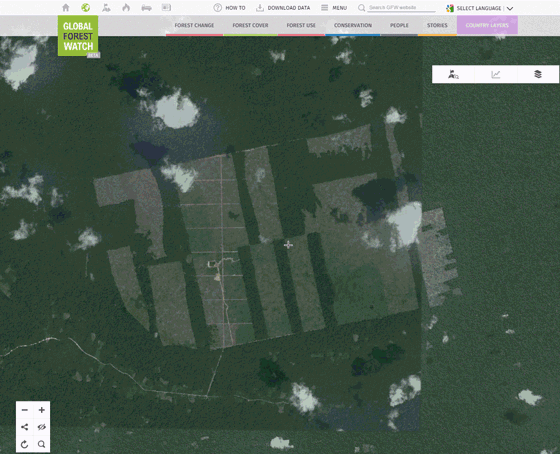Can reveal the destruction of individual trees
Norway to supply highly detailed satellite images of world's rainforests
Historical archive
Published under: Solberg's Government
Publisher: Ministry of Climate and Environment
News story | Date: 27/06/2019
Norway intends to spend up to USD 50 million USD to purchase high-resolution images of tropical forests. The images will be made freely available for governments, researchers and NGOs all over the world. They will enable the monitoring of deforestation, even on smaller areas. -Insights into changes in the rainforests is crucial for reducing tropical deforestation, says Minister of Climate and Environment Ola Elvestuen.
For over a decade, Norway's International Climate and Forest Initiative – NICFI - has supported developing countries' efforts to reduce deforestation. Tropical deforestation leads to large emissions of greenhouse gases and is a grave threat to the global diversity of plants and animals. Estimates show that preserving forests and improving land management can contribute to one third of all the emission reductions before 2030 that the world needs to be on track to reach the goals set in the Paris Agreement.

Part of NICFI's forest funding has, for a number of years, given free access to satellite images and analysis that track and measure forest changes and loss. Norway supports Global Forest Watch - GWF - tracks annual changes in global tree cover and publish freely accessible maps around the globe. GFW also release early alerts on deforestation hotspots. Analysis methods developed at University of Maryland has also enabled GFW to separate deforestation of primary forests, extremely important to greenhouse gas emissions and biodiversity.
The satellite images used by these service show changes in the forest canopy over relatively large areas. However, they cannot detect illegal logging, or other activity, hidden by the rainforest canopy. Alongside better monitoring to detect forest crimes, NICFI is stepping up the fight against illegal deforestation through Interpol and the UN.
-The continued high deforestation rates is a global crisis of existential proportions, says Elvestuen. The latest data from Global Forest Watch showed that 2018 was the third worst year for primary tropical forest on record. The world lost an area the size of Belgium, 36.000 square kilometers of primary tropical forest.
- Our aim is to give everyone deeper insights into what is really going on in the forests, and strengthen the hand of those who try to save them, says Minister of Climate and Environment Ola Elvestuen.
Norway rewards several tropical forest countries, amongst others Indonesia and Brazil, with payments for reduced greenhouse gas emissions from deforestation.
-With better satellite images it is easier to uncover the reasons behind deforestation, it becomes easier to stop, and it becomes easier to set up good systems to reward countries that manage to curb deforestation, says Elvestuen.
Read the international news-story on Reuters here
NICFI is planning to purchase the high-resolution satellite imagery of all tropical countries for two years, with the possibility for extension for a further two years.
Norway aims to purchase the rights to the imagery, to make them freely available, used and shared multiple times by anyone who has a use of them. To ensure a widespread use of the images, they will be available through existing projects that Norway supports, such as Global Forest Watch and SEPAL. This will considerably strengthen these services.
NICFI's international tender seeks offers from the whole world. The plan is to complete this process during the fall of 2019. If NICFI finds a supplier that can deliver a satisfactory product, the images could be available already by the end of the current year.
Details, including technical requirements, are available at the European procurement web portal TED: